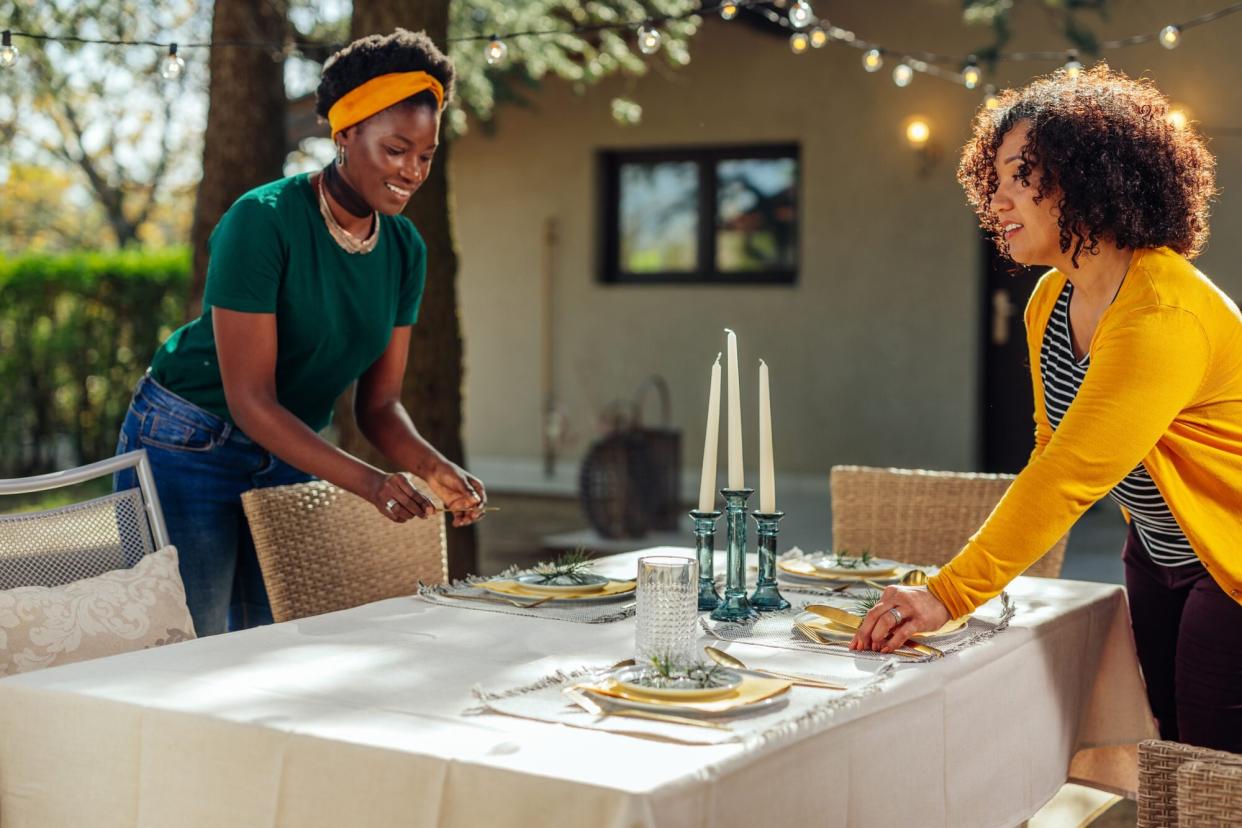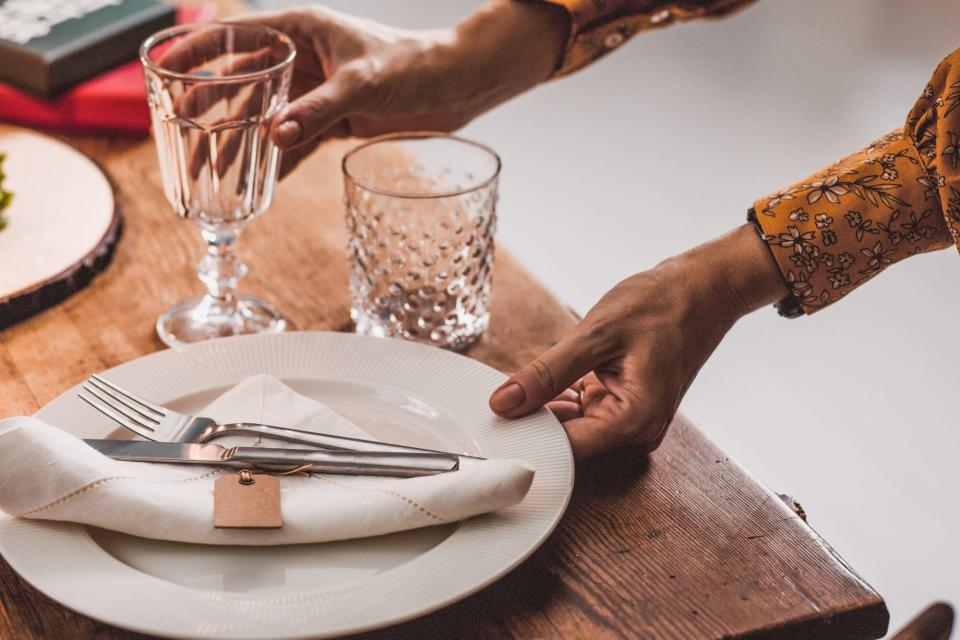These Are the 5 Most Common Mistakes Hosts Make When Setting a Table

GETTY IMAGES
Do you love hosting dinner parties? Then you probably know a thing or two about setting a table. Here's the thing: Whether you're a novice when it comes to this part of entertaining or have been setting creative tablescapes for years, it's ultimately easy to make a mistake as you craft your station.
For example, you might not know that you don't always need to have a standard fork, knife, and spoon at a setting. Certain cases are straightforward—you wouldn't place a spoon on the table for spaghetti, says Myka Meier, an etiquette coach and the founder of Beaumont Etiquette—but others are more nuanced; some fish entrées, including those with shrimp and other shellfish, actually don't require the cutlery commonly laid out for fish, she adds. Discover more table setting mistakes to avoid (and what you should do, instead), courtesy of our experts.
1. Misplaced Silverware
Utensils are essential for nearly every meal, but the way you place them and the amount you have on the table should vary based on the dishes you serve. According to Elaine Swann, a lifestyle and etiquette expert and the founder of the Swann School of Protocol, a basic table setting will normally require at least one fork and one knife.
Knives Facing the Wrong Direction
One common slip-up involves placing a knife in the incorrect direction: The blade should always face the plate.
Utensils on the Wrong Side of the Dish
Make sure your utensils aren't placed on the wrong side of the dishes altogether. Consider Swann's tip, which should help you remember where to put what: The fork should always be placed on the left, as both words have four letters. The knife should always be placed on the right, since both words have five letters.
Cutlery You Don't Need
If you don't need other utensils, don't place them on the table. "For example, placing both a dessert fork and spoon out when you are serving only ice cream would be incorrect," says Meier. "You would not need to put the dessert fork out if you knew your guests would not have a use for it."
2. Incorrect Glassware
When it comes to placing drinking glasses out on the table, make sure to match them to what you are serving. First, get an understanding of the different types of glassware available to you and what they look like.
Water and Tea Glasses
Water and tea glasses are usually goblets with shorter stems and larger drinking vessels.
White vs. Red Wine Glasses
Be sure to select the correct wine glass, too: "A white wine glass is more slender in nature, and the red wine glass has a wider bowl," says Swann. "Typically, white wine would be started with your salad or fish dish, and then the red wine is with the red meat."
Glassware You Don't Need
Once you know which glasses will be necessary for the meal, stop there—don't add any other drinkware to the table.

GETTY IMAGES
3. Crowded Tabletops
"My general rule of thumb is you only place items on the table that your guests will need to enjoy their meal," says Meier. Overcrowding the table with unnecessary items can also make it feel cluttered and confusing to your attendees.
To mitigate crowding, Swann recommends only using the dishes you need to serve a specific course, instead of layering stacks ahead of the meal for presentation alone. "We don't want to set the table by putting, for example, the entrée plate, then the salad plate, and then the soup bowl," she says. "That's not the proper manner to set a table when people are going to be eating. That's something that's decorative, but not for food consumption."
4. Incorrect Tablecloth Types
Planning on using a tablecloth? Make sure it's the correct size and shape. If you have a round table, use a round covering; if you have a square table, use a square one. Consider its length, too: According to Swann, the longer the tablecloth, the more formal it is. Mid-length options are best for casual gatherings.
Planning a more elevated get-together? Meier says to avoid bright table linens; neutral hues, like white and cream, are be best for a more formal dinner.
5. Distracting or Oversized Centerpieces
"Candles and flowers are two common areas that often lead to table setting mistakes," says Meier, who explains that florals and candle arrangements shouldn't block a guest's view. "They should either be low or high enough (think: table candelabras) to encourage eye contact and great conversation."
Otherwise, candles should only top a table when it's dark—and they should be unscented, as strong aromas could ruin a guest's tasting palate, she adds.

